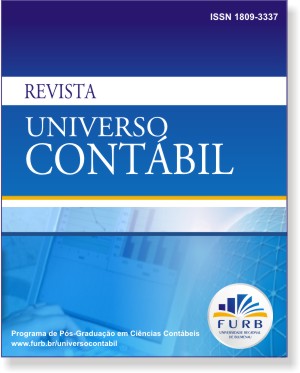AN ANALYSIS OF THE EDUCATION AND RESEARCH FIELD EVOLUTION IN ACCOUNTING FROM THE NETWORKS PERSPECTIVE
DOI:
https://doi.org/10.4270/ruc.20095Keywords:
Teaching and research in accounting. Bibliometry. Sociometry. Institutional theory. Social actors.Abstract
This study uses the institutional perspective for the analysis of the main agents involved in the accounting research field and by combining the social networks analysis, not yet observed in the scientific production field in education and accounting research, to the bibliometric studies, which is an innovative approach. Having the goal of analyzing the most relevant actors in the scientific production field evolution in education and accounting research in the Brazilian context, this investigation was performed through a bibliometric study, analyzing 139 articles from annals and journals, divided into three periods: 2004-2005, 2006-2007 and 2008; and a sociometric study (social networks), using the UCINET® 6 software. The performed analysis enabled the identification of the main individual actors (agents) and collective (institutions) involved in the accounting research field, as well as apperception of a relative evolution on the field regarding to the number of articles published and the cooperation networks density. The performance of this study is expected to contribute to the scientific production field development in education and accounting research, allowing the identification and fostering the conduct of future associations among authors and among institutions in order to expand the information exchange and the construction of knowledge in the field. Moreover, it aims to provide the presentation of a new design of research for this field, serving, in addition, as a diagnostic tool for Post-Graduation Programs in Accounting, allowing the investigation of its multiplying effect, especially regarding to the education research and Accounting research line.
Downloads
Downloads
Published
How to Cite
Issue
Section
License
The copyright for papers published in this journal belong to the author, with rights of first publication for the journal. As the papers appears in this publicly accessed journal, the papers are for free use, receiving their credit, in educational and non-commercial uses. The journal will allow the use of the papers published for non-commercial purposes, including the right to send the paper to publicly accessed databases.


